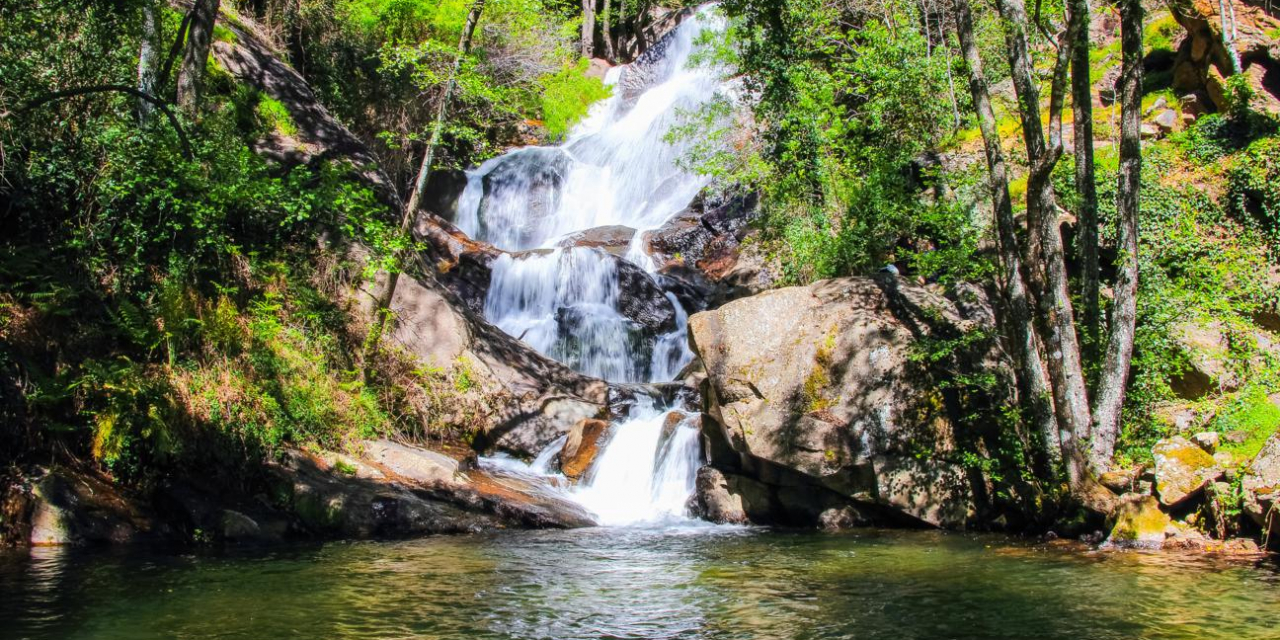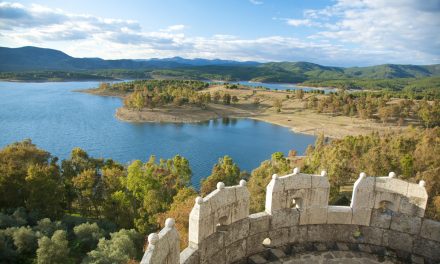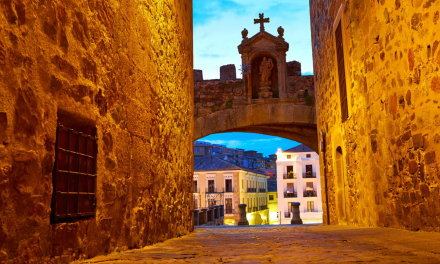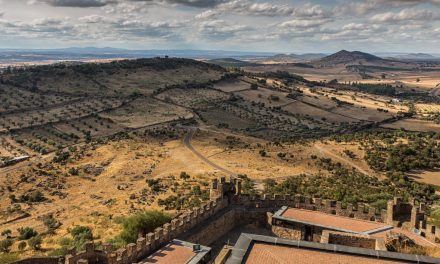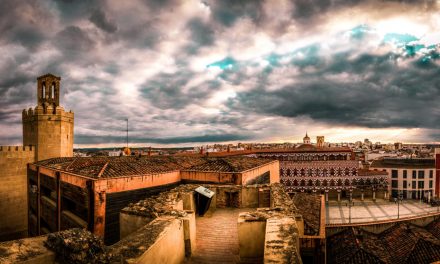En las estribaciones de la Sierra de Gredos y al abrigo de la Sierra de Tormantos, el Valle del Jerte despierta sensaciones al viajero y le obsequia con un legado natural e histórico de gran valor como recompensa por haberse adentrado en una tierra que sorprende por sus espectaculares paisajes de montaña y aguas cristalinas. Aquí reina y gobierna la cereza, que no sólo es un cultivo y un referente turístico, sino un modo de vida.
Un decorado natural salpicado de rocas graníticas, saltos y cascadas va dibujando La Reserva Natural de la Garganta de los Infiernos, un espacio protegido de 7.226 hectáreas que causa asombro por las marmitas gigantes que forman grandes pozas excavadas en la roca debido a la erosión fluvial. Un claro exponente de este monumento natural es el paraje de Los Pilones, en el que las aguas han ido esculpiendo a lo largo de millones de años una serie de fosas naturales que con la llegada del estío se convierten en impresionantes piscinas naturales.

No hay que olvidar que nos encontramos en el Valle del Jerte, en un entorno que se transforma en el marco ideal para la práctica del senderismo a través de una ruta de poco más de seis kilómetros que conduce al Centro de Interpretación de los Infiernos y discurre por una pista forestal que pasa por el Mirador del Chorrero de la Virgen, un concurrido balcón al que asomarse para contemplar bellos saltos de agua y avistar rapaces como el buitre leonado o el águila real.
Si tuviéramos que dibujar este valle multicolor es posible que cogiésemos una paleta con predominio de cuatro pinceles esenciales: el verde que nos ofrece su exuberante naturaleza, el azul con el que nos obsequian sus cristalinas aguas, el blanco que diseñan los cerezos en flor y el rojo que desencadena el fruto que brota en los árboles. Esta tierra trashumante, en sus días paso natural entre Extremadura y las tierras castellanas, encuentra en el Torreón del Calvitero (2.401 metros de altitud), el pico más elevado de Extremadura. Bañada y mimada por el río Jerte, esta comarca nos sumerge en gargantas de incomparable belleza natural donde darse un baño es algo más que un privilegio, quizás compartiendo espacio con algunos ejemplares de truchas autóctonas.
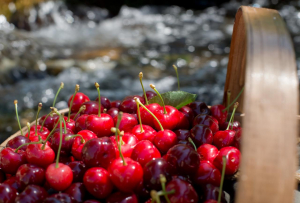
Es tal su riqueza que al atravesar sus senderos el caminante se va a topar con saltos de agua tan impresionantes como La Cascada de Marta, la de “La Desesperá”, la del “Caozo” o La Cascada del Calderón, entre otras muchas. Alisos, fresnos, castaños, robles y olivos van moldeando un paisaje idóneo para disputar pruebas como la famosa Picota Bike, uno de los eventos deportivos más espectaculares del calendario regional en el que se dan cita hasta 300 deportistas nacionales e internacionales; o la Carrera por Montaña Garganta de los Infiernos, otro de los grandes emblemas que elevan el Valle del Jerte a su máxima expresión. Porque no hayque olvidar que nos encontramos en uno de los destinos consolidados en Extremadura para la práctica del turismo activo con rutas en BTT como las del Cordel del Valle, la de los Pinos de Tornavacas o la del Monte Reboldo; unas y otras pintan un mapa cargado de itinerarios que nos van a mostrar a bordo de las dos ruedas los encantos y la inmensidad del Valle del Jerte muy cerca de barrancos como el de Los Papúos, Los Hoyos y Las Nogaleas, donde se viven experiencias inolvidables para la práctica del barranquismo.
Pero si hay algo que ha hecho mundialmente conocido al Valle del Jerte ha sido el cultivo de la picota, un fruto del que han venido viviendo las gentes de la comarca desde el siglo XVII. Es la variedad de cereza apreciada por su inconfundible sabor y por su calidad superior, avala por el consejo regulador de la Denominación de Origen Protegida Cereza del Jerte. En primavera se vive con la Fiesta del Cerezo en Flor, una celebración popular declarada de Interés Turístico Nacional que permite al visitante contemplar la estampa única que regalan más de un millón de cerezos en flor diseminados por todos los municipios del valle que abren las puertas para mostrar su arquitectura popular, bodegas, lagares y fraguas que guardan todo el sabor de antaño.
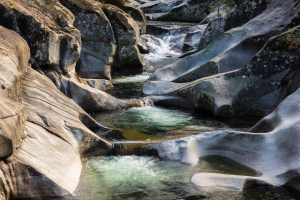
El Valle del Jerte es una de las despensas más ricas de Extremadura. Las truchas, las carnes de cabrito y cordero, embutidos artesanales, quesos y dulces tradicionales completan una oferta gastronómica digna de saborear sin prisa, disfrutando del paisaje que regala este paraíso del norte de Cáceres de enero a diciembre.
On the spurs of the Gredos Mountain Range and in the shelter of the Tormantos Mountain Range, the Valle del Jerte awakens sensations in the traveller and gives them a natural and historical legacy of great value as recompense for having entered a land that amazes with its spectacular mountain landscapes and crystal-clear waters. Here is where the cherry tree governs and reigns, something which isn’t just a crop and a touristic reference, but also a way of life.
A natural setting, dotted with granite rocks, chutes and waterfalls outlines the Garganta de los Infiernos Nature Reserve, a protected area of 7,226 hectares which is amazing due to its large kettle holes which form big potholes excavated in the rock due to fluvial erosion. A clear example of this natural monument is the Los Pilones area, where the water has slowly sculpted a series of natural pits over millions of years which, when summer comes around, become incredible natural swimming pools.
We mustn’t forget that we are in the Jerte Valley, in a setting which becomes the ideal place to go hiking along a route of just over six kilometres that leads to the Infiernos Interpretation Centre and goes along a forest track that passes by the Chorrero del Virgen Viewpoint, a busy balcony to look out from and contemplate beautiful waterfalls and watch birds of prey such as the griffon vulture or the golden eagle.
If we had to paint this multi-coloured valley, we might possibly select a palette where four essential hues predominate: the green we are offered by its exuberant nature, the blue its crystalline waters give us, the white of the cherry blossoms and the red that spreads out when the fruit ripens on the trees. This migratory cattle-herding land, once upon a time a natural route between Extremadura and Castile lands, has the Torreón del Calverito (2,401 metres high) as the highest peak in Extremadura. Bathed and fed by the Jerte River, this region immerses us in gorges of incomparable natural beauty where having a swim is much more than a privilege, perhaps even sharing the waters with several kinds of local trout.
Such is the natural wealth of this area that on walking along its paths, the hiker will meet waterfalls as impressive as the Cascade de Marta, ‘La Desesperá’, the ‘Caozo’ or the Cascada del Calderón, amongst many others. Alder, ash, chestnut, oak and olive trees compose an ideal landscape to take up challenges such as the famous Picota Bike, one of the most spectacular sporting events on the regional calendar where up to 300 sportspeople from around the country and abroad take part; or the Garganta de los Infiernos Mountain Race, another of the great emblems that elevates the Jerte Valley to its greatest point. After all, we mustn’t forget that we are in one of the parts of Extremadura that has consolidated the opportunity of conducting active tourism with mountain bike routes such as that of Cordel del Valle, Los Pinos de Tornavacas or Monte Reboldo; they all sketch out a map filled with itineraries that on two wheels will show us charms and the immensity of the Jerte Valley close to canyons such as Los Papúos, Los Hoyos and Las Nogaleas – where unforgettable opportunities to do canyoning are experienced.
However, if there is anything that has made the Jerte Valley well-known around the world, it has to be the cultivation of the black cherry, a fruit that the inhabitants of the region have lived from since the seventeenth century. It is a type of cherry that is valued for its unmistakeable flavour and for its superior quality, the Jerte cherry is endorsed by the regulatory body of Denominación de Origen Protegida – a seal granted to local products of exceptional quality. In spring, the Fiesta del Cerezo en Flor (‘the Cherry Blossom Festival’) is celebrated, a popular event declared as one of national touristic interest (‘Interés Turístico Nacional’) which allows the visitor to observe the unique image provided by a million cherry trees in blossom that are spread throughout all the municipalities of the valley who open their doors to display their typical architecture, wine cellars, wine presses and forges that store the flavour of yesteryear. The Jerte Valley is one of the most abundant natural larders in Extremadura. The trout, the goat and lamb meat, craft cooked meats, cheeses and traditional cakes and sweets complete a gastronomic offering worthy of savouring slowly, whilst enjoying the landscape which this paradise to the north of Cáceres grants us from January to December.


